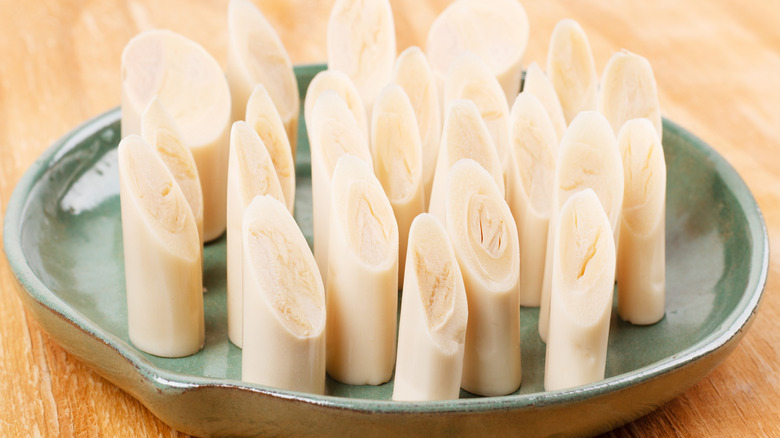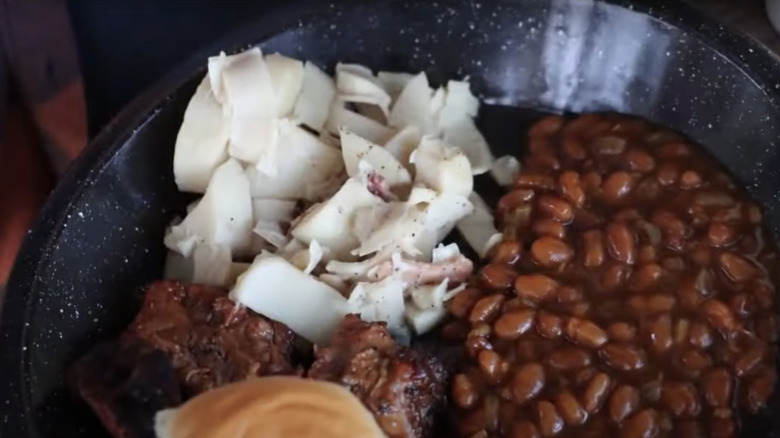Swamp Cabbage: The Florida Specialty With An Unappetizing Name
Despite its reputation for dangerous animals and swamps, Florida is home to quite a few culinary gems. From the themed Boathouse restaurant in Orlando to some of the best Cuban sandwiches in the entire country, Florida is a great place to find hidden foodie gems. However, for the more adventurous, true Floridian food is way off the beaten path.
A lot of people would hear the name "swamp cabbage" and immediately avoid trying it, regardless of what food it might be. Once you get past the name, though, there's something quite delicious waiting on the other side. This state delicacy comes from a type of palm tree, very similar to heart of palm.
Swamp cabbage recipes are so popular in Florida that oftentimes they're passed down through generations. The plant grows easily in Florida's environment, so it kind of makes sense for it to be a state speciality. Plus, cooking swamp cabbage is relatively simple, so anyone can make and enjoy it, despite its off-putting name.
Florida's state tree
Swamp cabbage's more official name is sabal palm tree, but it's known by locals simply as cabbage palm or swamp cabbage. Other than being used as food, the sabal palm tree is also Florida's designated state tree. In a weird way, eating swamp cabbage is a way of showing off some true Floridian pride.
Although swamp cabbage can be used in all kinds of dishes, the namesake dish is a savory stew, typically eaten by itself, although it's sometimes also enjoyed as a side dish with seafood. Swamp cabbage is combined with meats like bacon, plus broth, then boiled down for 10 to 20 minutes until the cabbage is tender.
Alternatively, swamp cabbage can be stir fried with meats and vegetables for a delectable meal. Regardless of how it is cooked, swamp cabbage is widely enjoyed by many Floridians. Florida is quite proud of its swamp cabbage dishes, going so far as to host a festival yearly in LaBelle, Florida each year.

